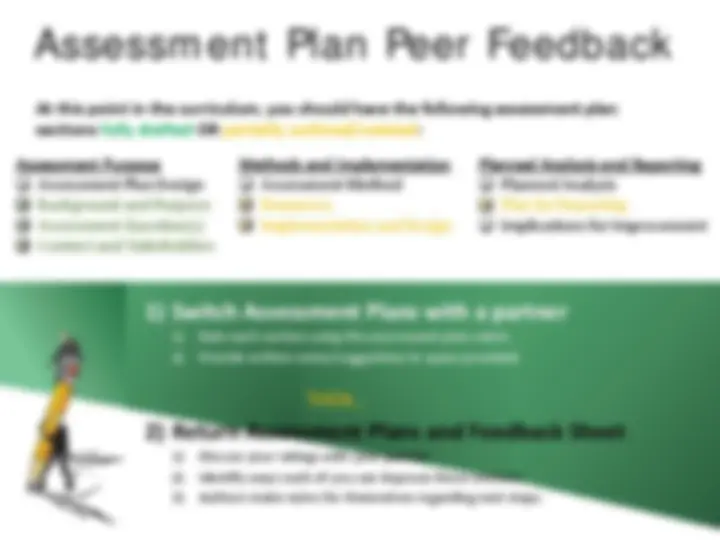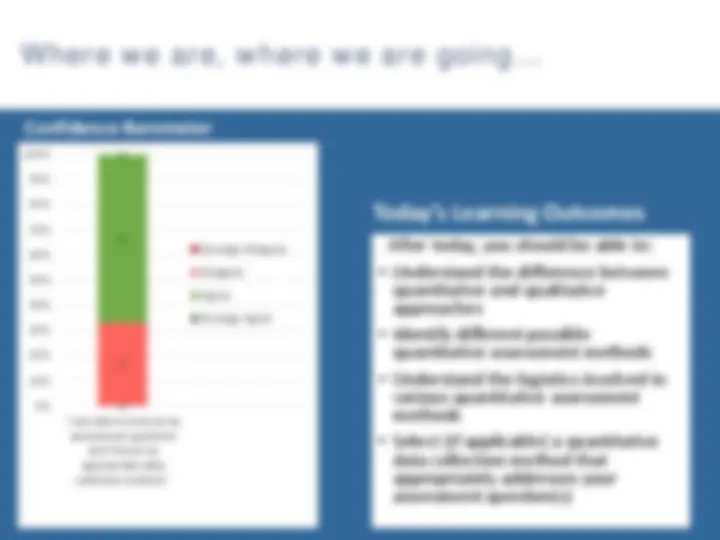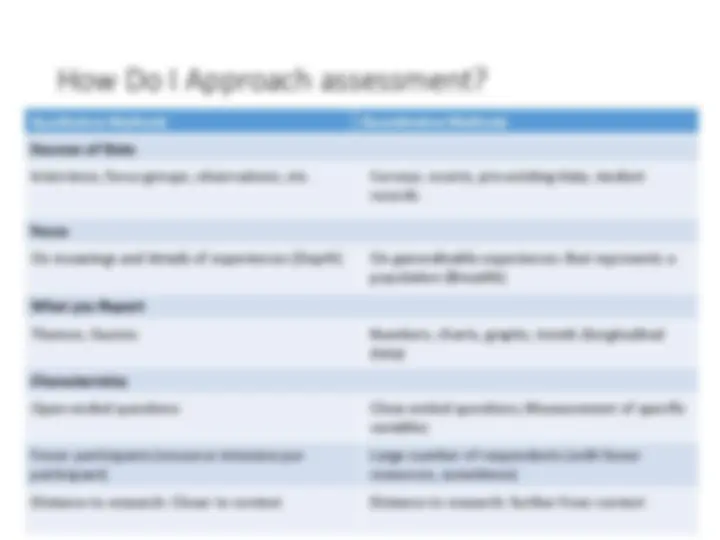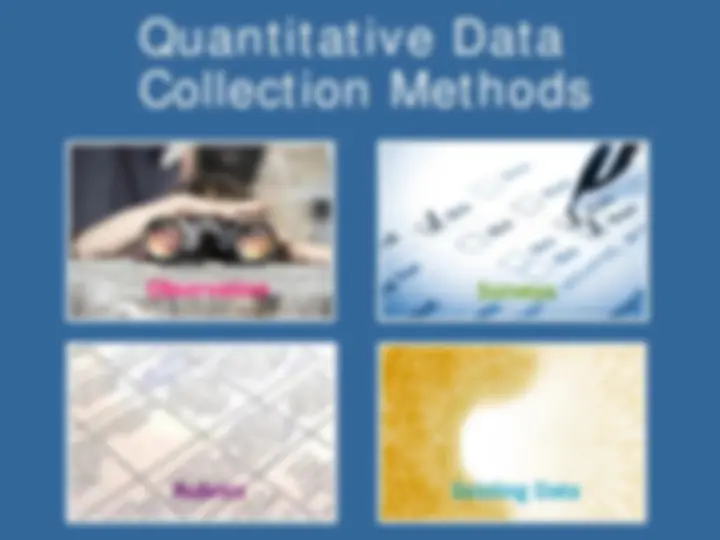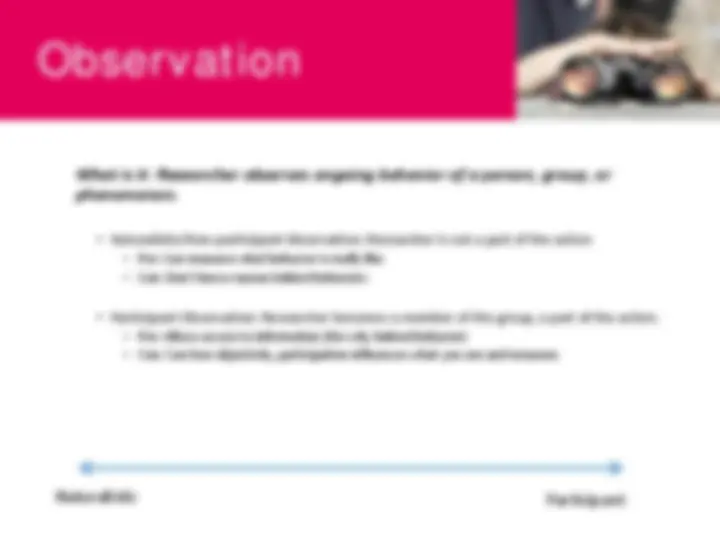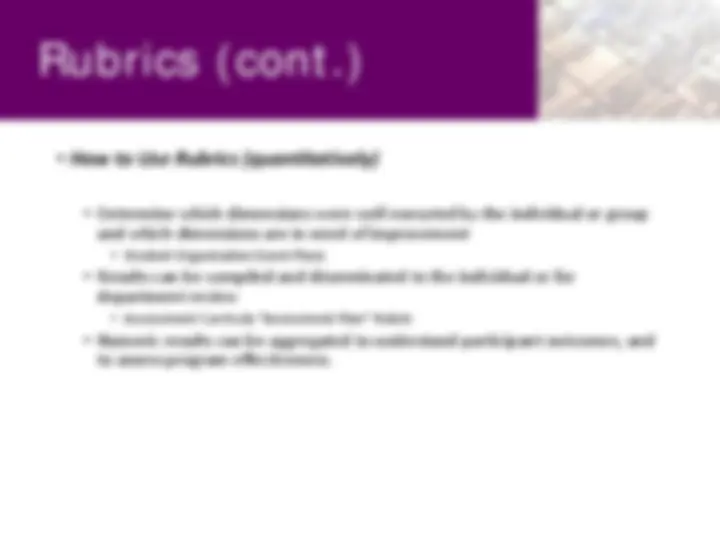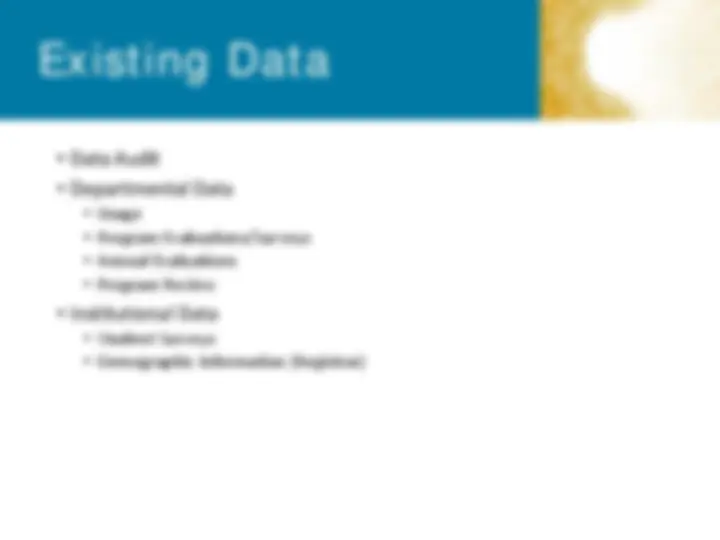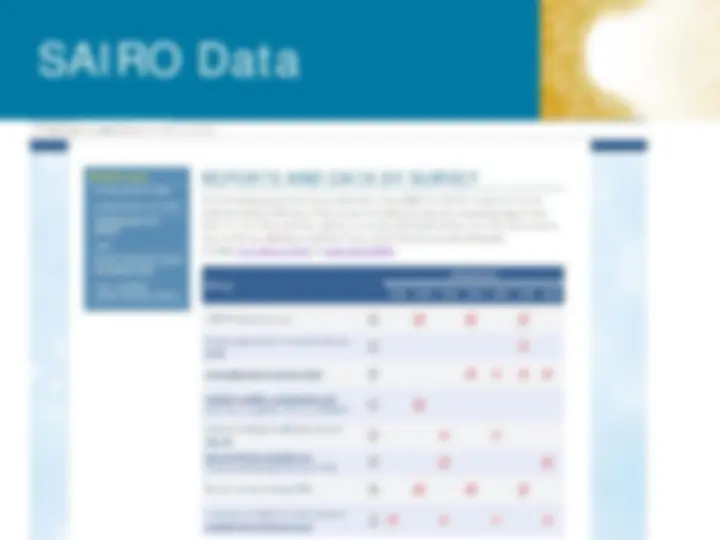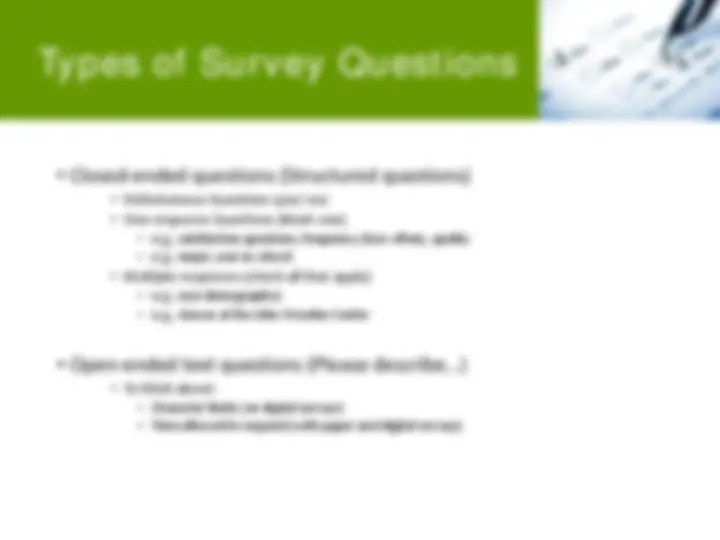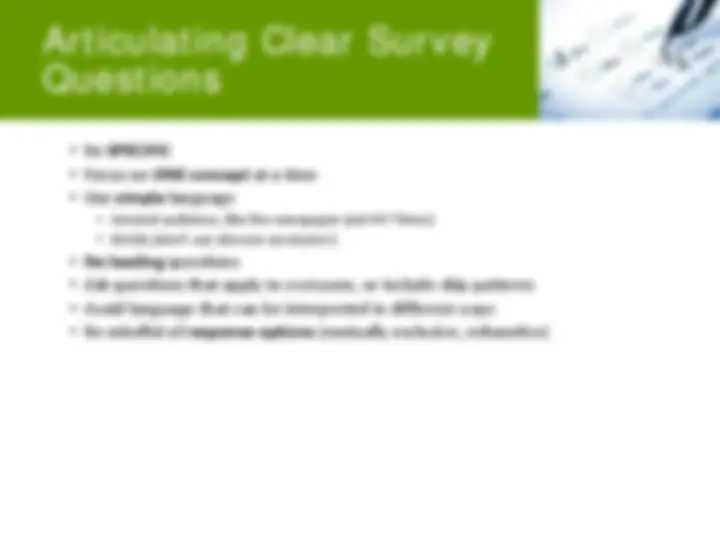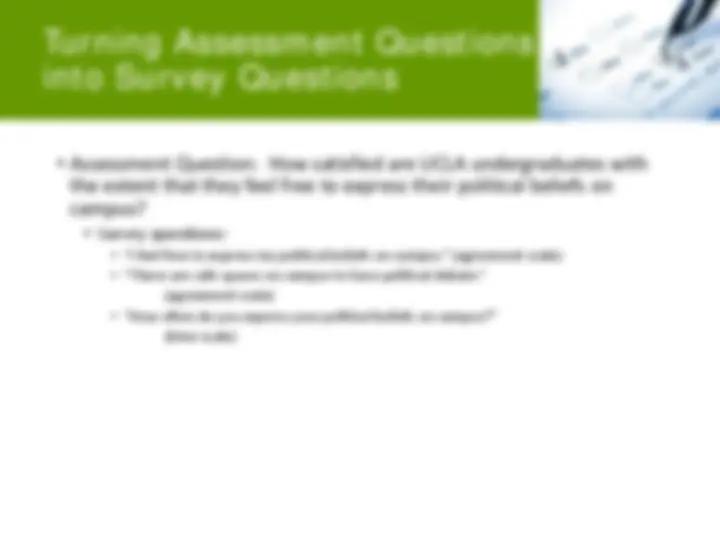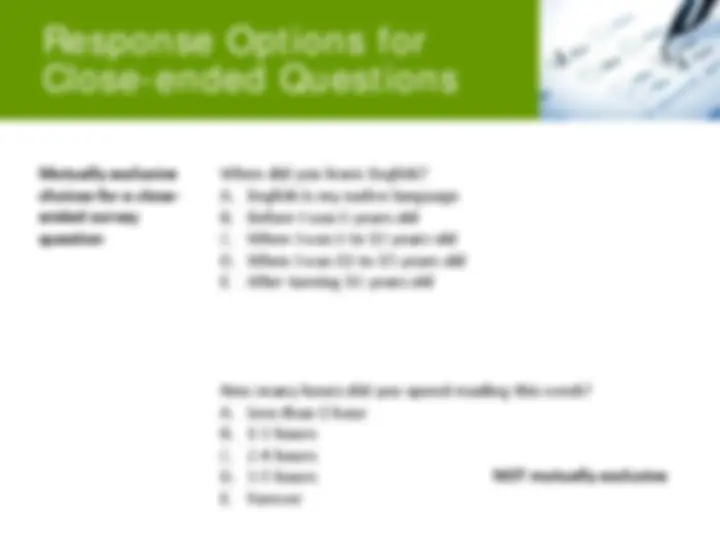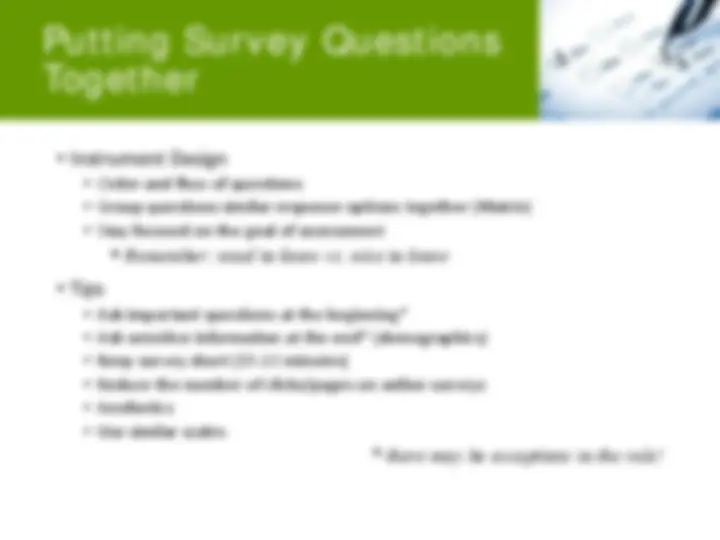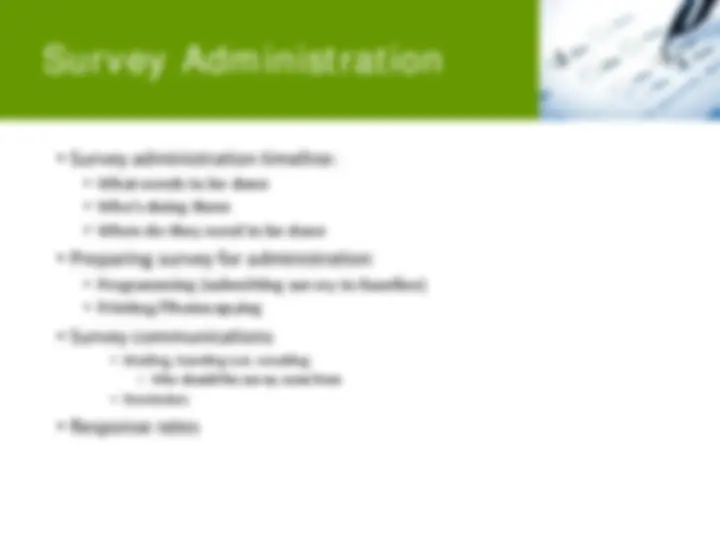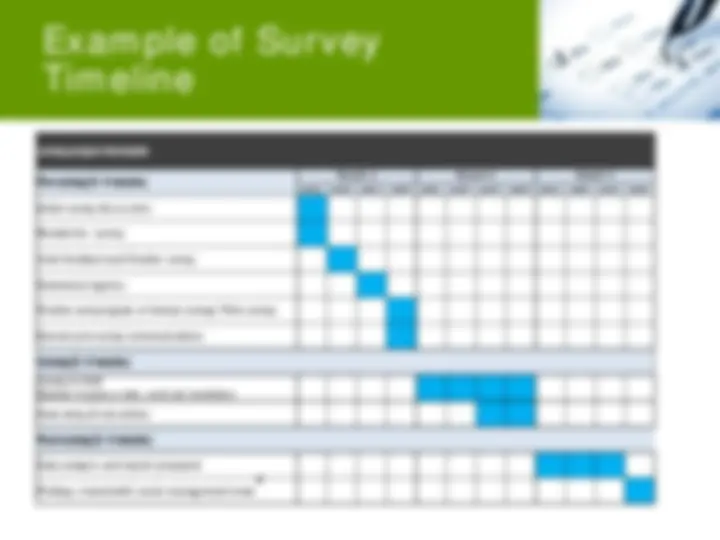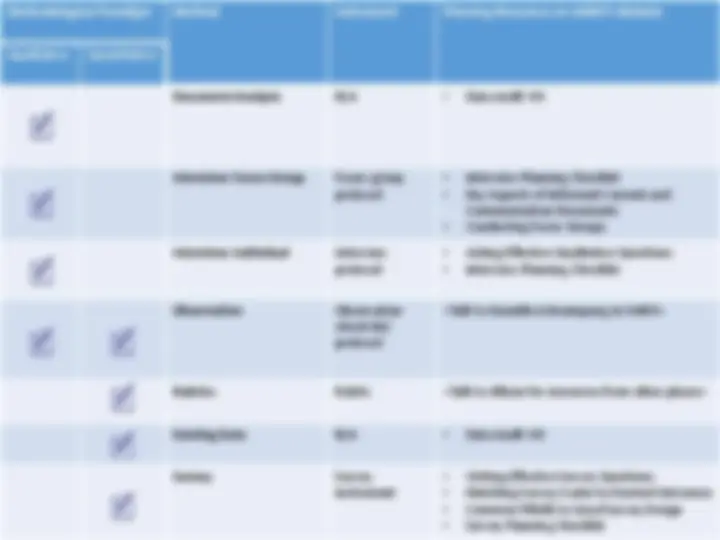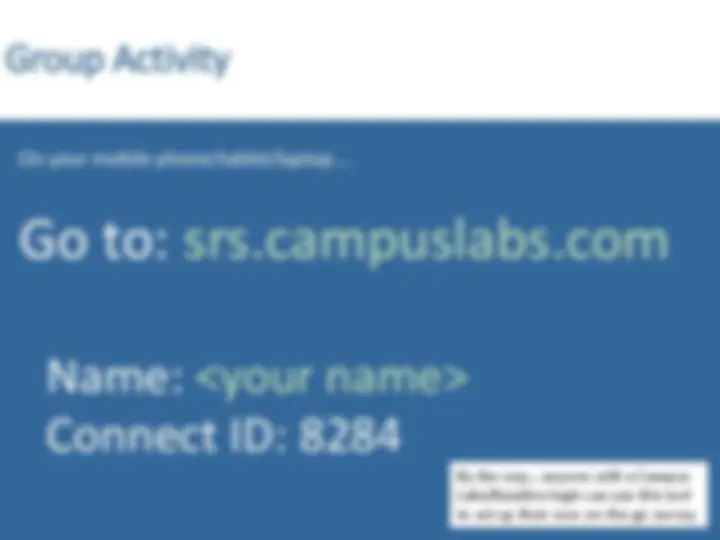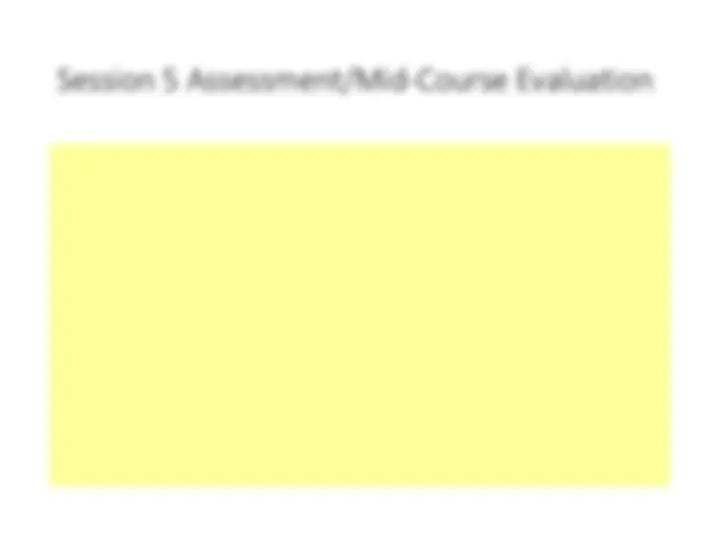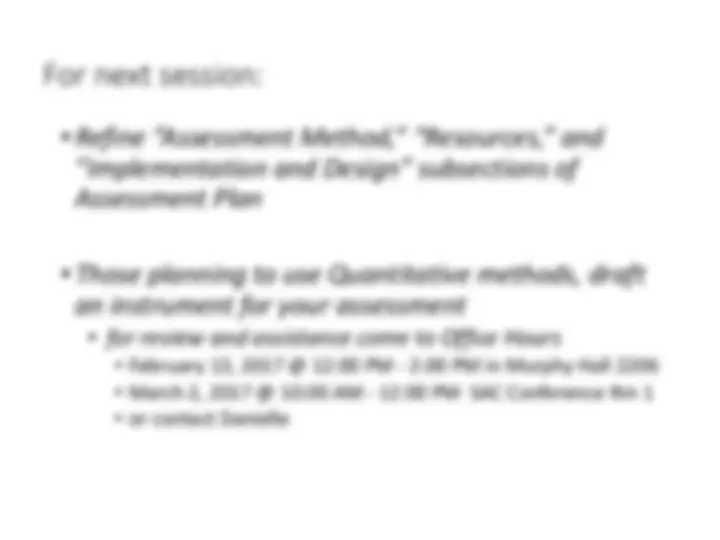Download Choosing the Right Data Collection Method: Understanding the Difference and more Study notes Logistics in PDF only on Docsity!
Quantitative Data Collection Methods
-CASA Session 5-
Session 5 Overview
- Session 5 learning outcomes
- Overview of Qualitative and Quantitative Paradigms
- Quantitative Research & Data Collection Methods
- Observation
- Rubrics
- Existing data
- BREAK
- Surveys
- Session Assessment/Mid-course check-in
- For Next Session…
Assessment Plan Peer Feedback
At this point in the curriculum, you should have the following assessment plan sections fully drafted OR partially outlined/notated:
Assessment Purpose Assessment Plan Design Background and Purpose Assessment Question(s) Context and Stakeholders
Planned Analysis and Reporting Planned Analysis Plan for Reporting Implications for Improvement
Methods and Implementation Assessment Method Resources Implementation and Design
1) Switch Assessment Plans with a partner
- Rate each section using the assessment plan rubric.
- Provide written notes/suggestions in space provided.
THEN…
2) Return Assessment Plans and Feedback Sheet
- Discuss your ratings with your partner.
- Identify ways each of you can improve these sections.
- Authors make notes for themselves regarding next steps.
Where we are, where we are going…
Confidence Barometer
After today, you should be able to:
- Understand the difference between
quantitative and qualitative
approaches
- Identify different possible
quantitative assessment methods
- Understand the logistics involved in
various quantitative assessment
methods
- Select (if applicable) a quantitative
data collection method that
appropriately addresses your
assessment question(s)
Today’s Learning Outcomes
0
3
6
0
0%
10%
20%
30%
40%
50%
60%
70%
80%
90%
100%
"I am able to look at my assessment questions and choose an appropriate data collection method."
Strongly Disagree Disagree Agree Strongly Agree
Continuum of methods
More
Qualitative
More
Quantitative
Naturalistic Observation
Open-Ended Survey Questions
Semi-Structured Interviews
Measurements
Close-Ended Survey Questions
How Do I Approach assessment?
Qualitative Methods Quantitative Methods
Sources of Data
Interviews, focus groups, observations, etc. Surveys, counts, pre-existing data, student records
Focus
On meanings and details of experiences (Depth) On generalizable experiences that represents a population (Breadth)
What you Report
Themes, Quotes Numbers, charts, graphs, trends (longitudinal data)
Characteristics
Open-ended questions Close-ended questions, Measurement of specific variables
Fewer participants (resource intensive per participant)
Large number of respondents (with fewer resources, sometimes)
Distance to research: Closer to context Distance to research: further from context
Observation
What is it: Researcher observes ongoing behavior of a person, group, or phenomenon.
- Naturalistic/Non-participant Observation: Researcher is not a part of the action
- Pro: Can measure what behavior is really like
- Con: Don’t know reason behind behaviors
- Participant Observation: Researcher becomes a member of the group, a part of the action.
- Pro: Allows access to information (the why behind behavior)
- Con: Can lose objectivity, participation influences what you see and measure.
Naturalistic (^) Participant
- How to do Observation (quantitatively):
- Keep a list of who enters/uses your office or attends a program
- Uses:
- Schedule of when the most frequent use occurs
- % of attendance by students of different characteristics (depending on what is collected)
- Observe how often you have to replace an item, refill a jar, etc.
- Uses:
- Learn about student behavior, needs
- Help determine questions to ask
- Note which entrance students use, or the way they access the services (e.g. email, online, phone) - Uses: - Set up information boards, office/desk locations, etc
Observation (cont.)
- How to Use Rubrics (quantitatively)
- Determine which dimensions were well executed by the individual or group and which dimensions are in need of improvement - Student Organization Event Plans
- Results can be compiled and disseminated to the individual or for department review - Assessment Curricula “Assessment Plan” Rubric
- Numeric results can be aggregated to understand participant outcomes, and to assess program effectiveness.
Rubrics (cont.)
Existing data
- Data Audit
- Departmental Data
- Usage
- Program Evaluations/Surveys
- Annual Evaluations
- Program Review
- Institutional Data
- Student Surveys
- Demographic Information (Registrar)
Existing Data
- Session 5 learning outcomes
- Overview of Qualitative and
Quantitative Paradigms
- Quantitative Research & Data
Collection Methods
- Observation
- Rubrics
- Existing data
- BREAK
- Surveys
- Session Assessment/Mid-course
check-in
- Any gathering of information from an individual or group of individuals using a pre-specified set of questions and responses
- Formal:
- Digital survey administered after an event
- Pen and paper comment cards at a front desk
- Informal:
- Hands raised in response to questions at an event
- Index cards collected after an event
Surveys
- Be SPECIFIC
- Focus on ONE concept at a time
- Use simple language
- General audience, like the newspaper (not NY Times)
- DUOA (don’t use obscure acronyms!)
- No leading questions
- Ask questions that apply to everyone, or include skip patterns
- Avoid language that can be interpreted in different ways
- Be mindful of response options (mutually exclusive, exhaustive)
Articulating Clear Survey
Questions
- Assessment Question: How satisfied are UCLA undergraduates with the extent that they feel free to express their political beliefs on campus? - Survey questions: - “I feel free to express my political beliefs on campus.” (agreement scale) - “There are safe spaces on campus to have political debate.” (agreement scale) - “How often do you express your political beliefs on campus?” (time scale)
Turning Assessment Questions
into Survey Questions


